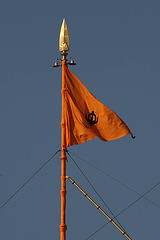 Pastors are symbols of their congregations. The person who occupies the office of pastor must, on some level, embody the culture and mission of the congregation. This phenomenon becomes more pronounced the larger a congregation becomes. In the very large church people who listen to the pastor teach on Sunday morning rarely encounter the pastor as person at any other time; they only experience a pulpit persona. Effective large church pastors know how to craft and project themselves as effective symbols of their congregation.
Pastors are symbols of their congregations. The person who occupies the office of pastor must, on some level, embody the culture and mission of the congregation. This phenomenon becomes more pronounced the larger a congregation becomes. In the very large church people who listen to the pastor teach on Sunday morning rarely encounter the pastor as person at any other time; they only experience a pulpit persona. Effective large church pastors know how to craft and project themselves as effective symbols of their congregation.
Recently, Doug Riddle at the Center for Creative Leadership posted a blog entry about the Leader as Symbol. Here’s what he said:
“Among leaders I’ve coached, one of the most difficult transitions is the one from person to symbol. It’s not that one stops being a person. Rather, the body politic needs symbols that can provide a rallying point. People may not read the Constitution of the United States, but they need it to be there. Flags are more obvious symbols of our collective identity, but people are, too. This explains the demand to see our leaders. Consultants advise presidents and CEOs to “make themselves more visible.” Visibility in leaders is important because they play a magical or symbolic role.
Oddly, this is one of the constraints upon senior leadership because this role has little obvious content. It is nearly all emotional force and it is strangely important for the shaping of organizational culture. The personality expressed on the stage stands for the culture of the organization and we see it most clearly in those who have shaped their companies through their personalities. Steve Jobs is Apple and Apple is Steve Jobs. This is not true only for the employees, but the stockholders whose hopefulness rises and falls on rumors of his health.
Leaders are real people, certainly, but part of their duty to the organization is fulfilled in their flag value. Unless you created the organization and still head it, you will need to decide what elements of the existing culture you will work to change and what you will inhabit. Either way, the higher you rise in your organization the more seriously you need to take your signal value. For a few close friends you may still be Dorothy or Ahmed or Seymour, but for many more you are the company.”
So, have you stopped to think recently about what kind of signal value you project in your congregation? What symbol are you communicating by your presence? How is that symbol creating or reinforcing congregational culture?
And perhaps more importantly, how are you tending the well-being of the person behind the symbol, so that you don’t lose yourself along the way?
Photo Credit: Holy Symbol of Sikhs from Captain Suresh



